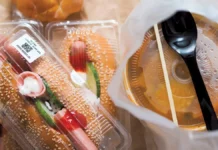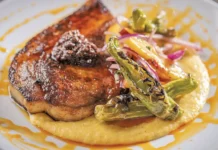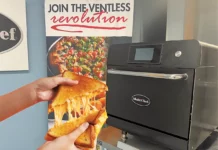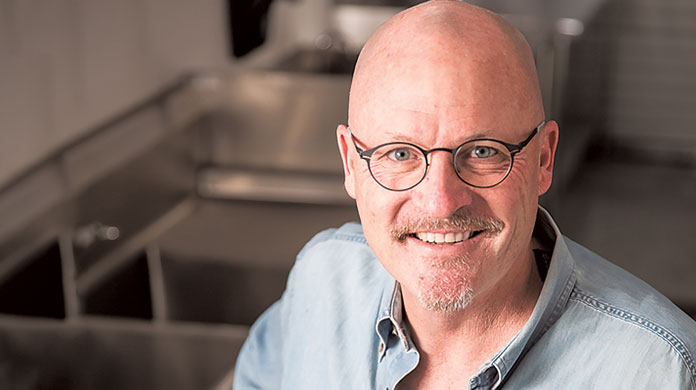
The challenge of COVID-19 is yet another example of how the restaurant industry morphs to survive and respond to the changing needs of its customer base. One such example is something we’ve been hearing about for the past several years: ghost kitchens. The pandemic has brought this style of delivery-only focused operation to the forefront.
Total Food Service wanted to chat with one of the movers and shakers in the ghost kitchen space, and we were able to connect with Jim Collins, who is guiding the fortunes of
Kitchen United.
Can you share some of your background with us?
I came to this with a very different background. I grew up in the suburbs of Los Angeles and after a varied college career, finished my degree at Pepperdine University. I then spent the first twenty years of my career in the tech industry. The last part of that was spent running a series of tech companies doing B2B and B2C transactions and focused on small business. It is interesting how it ran the gamut from nationwide call centers to software for accounts receivables, an ecommerce company and even a clearing house for professional photographers. A very diverse background with the same focus on small business maximizing revenues.
What led you to hospitality?
The last company I was working for was a market research company. We sold it and I was burned out. I couldn’t do any more tech, I needed something else. I had always found the restaurant business interesting. So, there was a restaurant for sale not far from where I live, and I literally walked up the street and bought it.
You have a strange sense of “burnout” literally going from the frying pan into the fire by buying a restaurant.
(Laughs) Sometimes you are burned out on one thing and something else is so different that it gives you the break you need. For me, I had nothing more to learn from tech. In a restaurant, everything I did involved learning something new. I remember the very first day, walking in and asking how the dishwasher worked. The staff told me not to worry about it, that I was the owner and didn’t need to know how it worked. I told them because I’m the owner, that’s exactly why I need to know how everything works. I have loved every minute of it though, even the frustrating moments.
Based on the commitment to community, what have you learned from the COVID-19 challenge with your own restaurant?
We had to make a decision of whether to stay open or closed. We felt that closing was turning our back on our community. In many ways, it’s the same decision we had to make with Kitchen United.
How did the Kitchen United opportunity come about?
I felt as if we had the restaurant operating well enough that I could dive into something else and handle both responsibilities. It’s been a great 2 1/2 years. It’s interesting, in my own restaurant, I was facing the challenges of how to make delivery work and how to utilize the new delivery companies that were appearing.
A driver would show up at our door and want to place an order with our restaurant’s host. At the beginning, I would tell them that we don’t do takeout, please go away. All of a sudden, there was enough volume, where I realized we needed to find a way to make this work. That’s exactly what we did.
Coincidentally, in the middle of figuring out how to make it work in my own restaurant, I was contacted through a mutual friend by the investors at Kitchen United and asked if I would talk to them about taking the CEO role. I went and sat with them and when we spoke, I could see we were on the same page. So I took the job and three of us opened the business in our kitchen center in Pasadena, CA. and haven’t looked back.
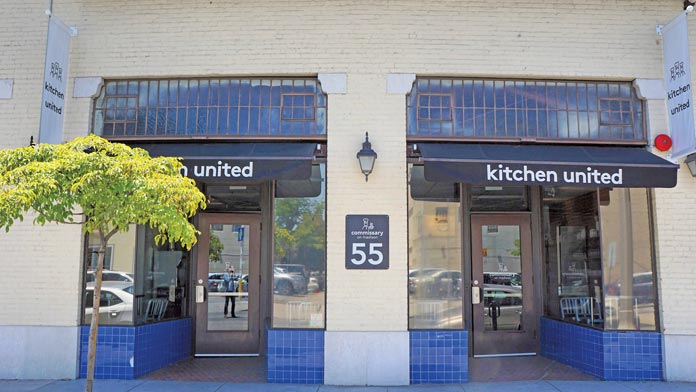
What was the agenda when you launched Kitchen United?
It was wild because we were starting a new company from scratch, learning how to serve a new marketplace in a new way. We had to invent vocabulary for what we were doing. We then had to figure out a model that included how restaurants are going to pay us. Then we had to figure out what kinds of restaurants we wanted to work with.
It was relatively easy to figure out what the product was going to be. I understood the challenges of delivery from what I was going through in my own restaurant. It was interesting as we began to work with much larger chains and operators how the dynamics of a single store operation translated into a much larger rollout across the country.
Like with any good business, we were right about a lot, wrong about a little and smart enough to know that we could let the market teach us what we needed to know to succeed.
What did the market teach you?
Tons! The first lesson is that this is not an easy business. There’s this notion in many circles that all you need to do is find a vacant 10,000 square foot building in an opportunity zone and put a bunch of kitchens in it. Then by doing that, the right mix of restaurants will run to find you, move in and be successful. I like to call that the “Field of Dreams” business plan.
What we learned is that these operations needed to be in high density, highly populated areas because the most important factor is: how long is it going to take me to get my food? We also found that too many restaurants in one of our facilities cause logistical challenges that will make your head spin.
On top of that, you will usually find that the last time the gas main was replaced in a vacant building was 1952. The right restaurant count in one of our facilities means we need a smaller gas line and less electricity, less ventilation to make this work. From a marketing standpoint, you create a much great opportunity for success with 8-10 restaurants competing for market share versus 40.
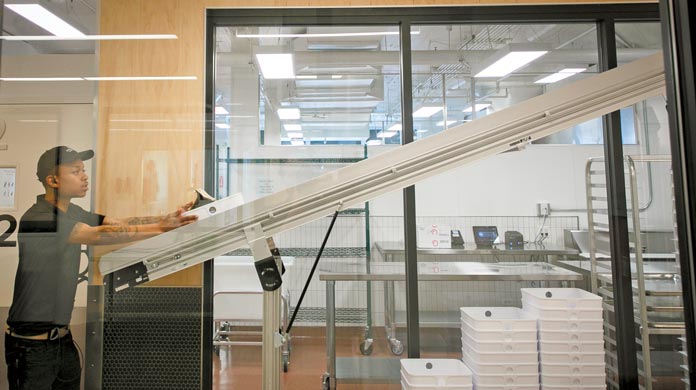
Does the term Ghost Kitchen properly describe what you do?
I hate that term actually, to me it sounds dark and dangerous. We prefer to call them “Kitchen Centers”. With that comes a “Pick-Up Center” because customers and delivery personnel can’t come in the kitchen and need a place to pick up food.
Have you found that national restaurant chains with bigger brand names perform better than local operators in your Kitchen Unlimited facilities?
Whether local or national, we have found that the key to success in our system lies in the digital connection that the restaurant has with its customer base. It does not matter how big the chain is, it only matters whether the consumer living around our kitchen center is interested in eating their food. We are looking for the digital interaction that includes how often are they ordering through those channels, if they are retweeting them, and sharing with their friends.
Are you in a supply and demand, or a demand and supply market relative to restaurants that want to work with you?
We have a lot more restaurants that want to work with us than we have space for. That also has been tempered by the fact that when we began, we said we were going to build 400 of these in four years. Everybody likes to tell us how smart we were for not doing that. The truth is we simply didn’t have enough money at the time to roll out that quickly. The fact is it was the best thing that ever happened. Because two years ago, if I called a landlord or broker, we couldn’t even get a call back. If I did get to talk to them and told them we were not going to pay $300 a foot for distressed retail space, that was the end of the conversation. Those conversations have changed. We are now ready to go faster as we look to build out.
Does the last month change the model of how Kitchen United can respond to the need in a marketplace?
I wish I knew the answer. Let’s look at it this way, across the restaurant industry with great turmoil, this is driving two paths. The restaurant that was teetering will simply not return. That was not our potential restaurant partner. The KU restaurant hunkered down and got smart. They got better at operating with less labor. They figured out how to manage their own online menu systems and how to open new channels. None of that is going to go away when this is over and all of the learning will carry forward into whatever is next. I also think that consumers are learning a lot. The average percentage of first-time orders, across channels, is as high as 25% which suggests growth.
What’s the driving factor behind that growth?
People went out and bought seven bazillion pounds of groceries at the local supermarket. They went home and cooked for three nights and someone in the family then says “I hated cooking before this started, I still don’t like it, let’s order delivery.” That growth will not go away.
How have these conditions impacted the packaging and labeling of Kitchen United’s food?
It made all of us grow up. Not only are we more cautious about bags being properly sealed, but we’re optimized how to make the handoff from our kitchen to the delivery and then to the consumer as safe as possible. My view is that it was something that needed to happen with or without COVID-19. We’ve heard for a long time that packaging was a food safety issue and needed to be improved. Those folks were right.
As you look at the types of cuisine that are succeeding at KU, is it traditional comfort food, like pizza-burgers-fries? What do you see?
There’s really been a big swing already. We started with a lot of dietary oriented concepts like Keto diets and more recently that has swung the other way to burgers, fries and pizza. In most cases, we are looking for a demand in a specific neighborhood that is not being met. Factors like what cuisine types people are leaving that neighborhood to get, and what cuisine is missing in that neighborhood.
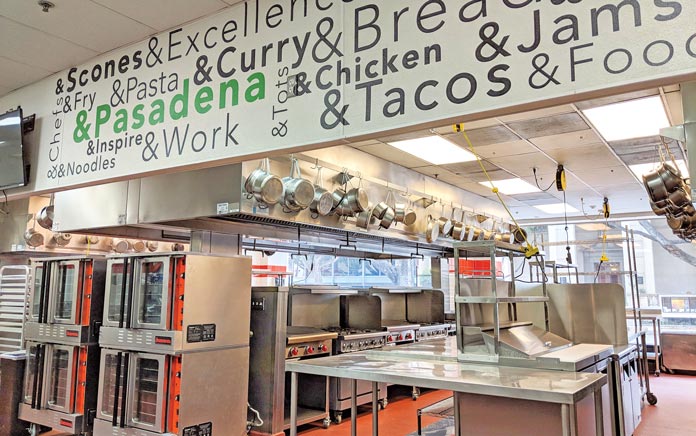
What’s your approach to building your kitchens?
Typically, we are working with a 7,000 square foot space and an older building. So, we build and design a basic kitchen footprint and then work with our restaurant partners to fine tune a layout that will work for their concept. Our nickname internally is “Tetris-ing” which means we are moving different shaped blocks inside a kitchen. The priority is minimizing the movement of a restaurant’s staff during peak periods to maximize productivity. So a range and dishwasher would come with our standard package but not a combi oven.
We do supplement that with a larger warewashing station that you can roll a cart down and use. There is a common walk-in area that segments space for each of our operators. We have a national equipment and supplies program with Wasserstrom who have been a fantastic partner for us. Eric Wasserstrom and his team have been great partners in providing specialized expertise.
What’s the culture like in your facilities?
It’s funny, we thought in the beginning that we would need to lock up everybody’s food and equipment. With everybody working under the same roof, there’s a mutual respect and zero theft. It’s interesting watching our restaurant owners and cooks, especially in these challenging times, work together and strategize. It has been eye-opening.
How is distribution handled for Kitchen United restaurants?
We have negotiated packages with various distributors that have enabled restaurants that don’t have those relationships to get better pricing. But we can work and encourage our restaurants to continue to source their own specialty items.
Do the restaurants you partner with close their existing operations and move their full operation under the Kitchen United roof?
Absolutely not. They keep their existing restaurants. When we go into a community, we look for the hot local concepts that have the best chance for success. For example, let’s say you have a busy restaurant in the West Loop of Chicago, but River North is outside of your delivery radius. So you want to serve that River North community but don’t want the expense of a dining room. So, you can lease space from Kitchen United, hire a couple of cooks and you are now in River North.
It has caused an interesting challenge because consumers drive to our facility looking for the restaurant with an address that they got from the delivery provider. We hear all the time, “I thought there was a Canter’s Deli here, where’s Canters?” So we now provide the ability for our Pick-Up locations to process orders. We can even handle cross-platform orders from multiple restaurants on a single ticket.
Does that kind of take you back to your tech roots?
I spent the first year learning the restaurant business. Last year was all about real estate and construction. This year, I’m back to tech. We couldn’t find something off the shelf to answer all of these needs, so we created it internally.
How do Kitchen United and your restaurants handle the responsibility for marketing?
We have a program that markets each of the facilities. The restaurants are also required to do their own marketing. We look at ourselves as the secondary source for driving traffic.
What is the nature of the deal between KU and your restaurants?
The restaurant pays a membership agreement with a monthly payment. There’s a 15% charge on sales to participate in the Mix platform which is a significant discount over third party options. It’s the softest lease you will ever see because we don’t want restaurants that are not ‘killing it’ to feel stuck. We also have a significant backlog of restaurants that would like to get in, so we want to move on as well.
What are your thoughts on the GrubHub and UberEats price gouging issue?
From the start we looked at what the delivery model needed to look like. We knew that these fees could end up in the 30% range. Our approach was to help them minimize their labor footprint. The thought was that with Kitchen United, we could eliminate the need for middle management, and that chefs and cooks from the restaurant brand could focus on what they love to do, which is cook. We have proven that it can be done successfully. So the operational profit is significantly higher than in their retail operations and that profit enables the ability to absorb the delivery commission. We continue to work on this, and we have launched our own platform with existing drivers in our markets that is based on a flat rate.
What does the competitive marketplace look like with well-heeled players including Travis Kalanick from Uber and Reef?
This is a giant market that is still growing. Even before COVID-19, there was the potential of a $200 billion marketplace to serve by 2023. To give you an idea, if I build a thousand kitchens, I can serve $2 billion of that. We need other people to figure out how to do this in different ways. Companies like SBE all have their own take. We learn from them and they learn from us.
Is this a real estate driven business or a people business?
I don’t think that distressed real estate by itself provides an opportunity. The whole thing is driven by restaurant success which is guided by consumer demand. I keep telling my team, we need to listen to the consumer, they will tell us where to locate, what restaurants they want how to order from, and whether they want to have it delivered or pick it up.
How do we do that and keep improving on making that experience great? We do that and the right real estate will find us with a busy popular solution that gets positioned as an amenity. We give that landlord a solution with multiple restaurant concepts versus a big box that might go out of business in a year and a half. We like being within a block of “Main Street” in a 7,000 square foot box that does not need to be on a ground floor. It could be subterranean or mezzanine.
I like to see the space where a previous failed restaurant makes the realtor break into a cold sweat because they thought it would take ten years to find someone dumb enough to lease it again. But it might just be perfect for our operation. All I need is a way to connect that space to 200 square feet that will serve as our “Pick-Up Center” at street level, and we’re ready to go.
To learn more about Jim Collins and Kitchen United, visit their website
All photos courtesy of Kitchen United


















